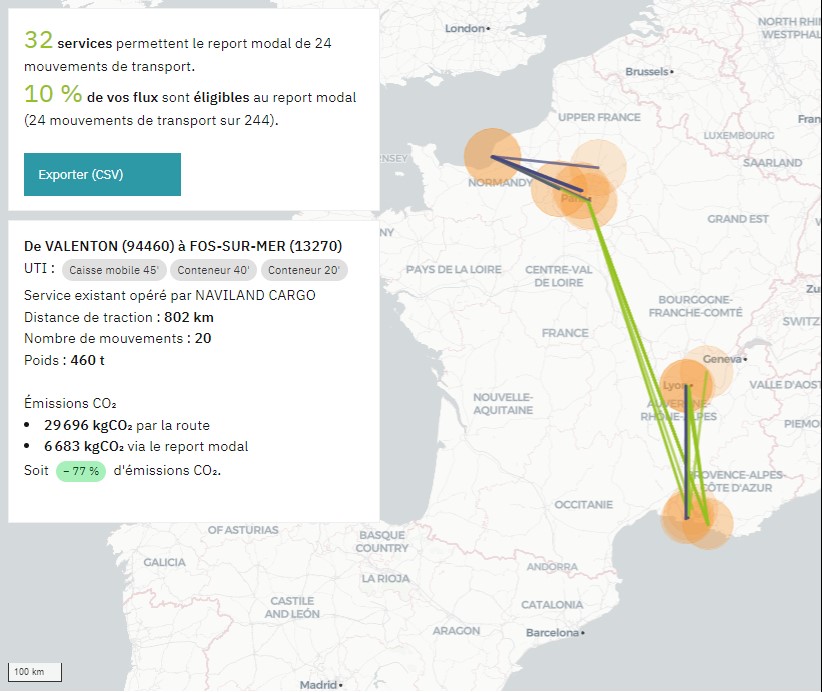LA LETTRE FERROVIAIRE – N°329 – June 18 2024
Appel d’aiR is a digital tool offering modal shift solutions. Combined transport services are already integrated.
Appel d’aiR is developed by the AI Cargo Foundation association. The goal is to develop “a solution serving the public interest,” shared by the entire transport and logistics sector, to enable shippers to quickly shift their freight to more sustainable transport modes, thereby decarbonizing and optimizing their logistics flows. The development of this digital tool cost seven million euros, funded through Energy Savings Certificates (C2E).
IDENTIFYING DECARBONIZED MULTIMODAL SOLUTIONS
Appel d’aiR is a website – www.appeldair.org – that allows shippers to enter key details about their goods, pickup and final delivery locations, and the pre- and post-haul distances. Once the data is entered, the tool provides a recommended transport mode and optimized route aimed at reducing emissions, using less polluting rail or waterway transport options.
Appel d’aiR relies on the integration of origin-destination routes offered by active combined transport operators. “This is easier to implement in the tool thanks to the regularity of combined transport routes and the interest shown by these operators in Appel d’aiR,” they explain. These operators have provided API datasets detailing the key features of the services they run and sell. AI Cargo Foundation hopes to soon gain access to all freight traffic data in order to enhance and refine the tool’s recommendations. This could include capacity information for conventional trains, easily identified via capacity management systems.
“Each client can view their goods flows in real-time along with the associated decarbonization options,” says Antoine Mionnet, Head of Development and Partnerships for Appel d’aiR at AI Cargo Foundation. CO₂ savings are also displayed, he notes.
AI Cargo Foundation aims to soon have access to all freight traffic data to further enhance and refine the proposed solutions.
A WAY TO CREATE NEW TRAINS
Appel d’aiR also features a section called Cumulus. This enables shippers with low-volume flows or plans for future transport to anonymously indicate their needs. Cumulus groups together freight flows that can share “a common pipeline” along all or part of the origin-destination route, thereby consolidating volumes along a corridor—an essential condition for possibly creating a train.
Rail companies with access to the tool can identify potential freight flows with enough volume concentration to justify launching a convoy. If optimal production conditions are met, a commercial offer can be made, with client anonymity lifted at that point. Ultimately, the tool does not generate actual transport orders nor determine the technical feasibility of the transport—that remains the responsibility of the operators.
According to Antoine Mionnet, the creation of Cumulus provides “a comprehensive overview of the modal shift potential in France.” Moreover, referencing all flows is also seen as a way to influence public policy regarding freight infrastructure dedicated to modal shift (such as rail-road-river platforms, etc.). Planned developments for the tool include a European-scale map and an English-language version.
Cumulus brings together freight flows that can use “a common pipeline” across all or part of the origin-destination routes, thus generating volume consolidation along a corridor—an essential condition for possibly creating a train.
BY – Jérémie ANNE

